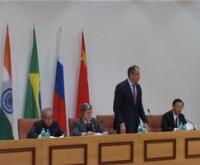An investment bank economist first grouped the nations of Brazil, Russia, India and China together based on two shared characteristics: large populations and rapid economic growth. The so-called BRIC nations had little else in common -- they covered the full scale of democratization, with varying degrees of financial transparency and vastly different economies. Yet after Goldman Sachs' 2001 report that coined the acromym was released, the BRIC nations became inexorably linked, at least in the collective mind of the investment community. Last week, the BRIC nations took their union out of the realm of analyst reports and formed a political alliance to challenge the dominance of the economic institutions created in the aftermath of WWII. The one-day summit in the Ural Mountains city of Yekaterinburg brought together ministers from the second-largest food producer (Brazil), biggest energy exporter (Russia), the largest democracy (India), and the most populous country (China). Together the BRIC nations represent 40 percent of the world's population, and more than 10 percent of global GDP.
The Building BRICs of a New International System?

